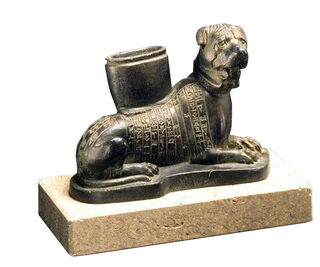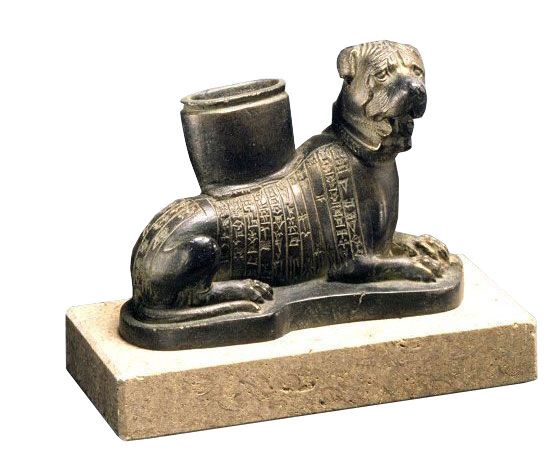Quick info
museum replica | bonded bronze + shell limestone | handmade | total height 10 cm
Detailed description
Temple Dog
The artists of the ancient Orient have always had a fondness for animals, which in their belief symbolised the elemental forces more adequately than human beings. This watchdog was supposed to offer a sacrifice to the goddess Nin-isina; the dedication says that "the ecstatic priest and great singer Abba-duga" had it sculpted as an intercessory votive offering for the king of Ur.
Original: Musée du Louvre, Paris. Sumero-Akkadian, Isin period, 19th century BC, bronze.
Polymer ars mundi museum replica, cast by hand, with bronzed surface. Height with shell limestone base 10 cm.
Bronze powder is polymer-bonded. Special polishing and patination techniques give the surface of the casting an appearance similar to the bronze.
A true-to-the-original reproduction of an artwork in the same size and with the best possible material and colour uniformity.
The mould is usually taken directly from the original so that the replication reproduces even the finest details. After casting the replication, using the most appropriate method, the surface is polished, patinated, gilded or painted according to the original.
A replication of ars mundi is a recognizable copy of the original.
A plastic work of sculptural art made of wood, stone, ivory, bronze or other metals.
While sculptures from wood, ivory or stone are made directly from the block of material, in bronze casting a working model is prepared at first. Usually, it is made of clay or other easily mouldable materials.
The prime time of sculpture after the Greek and Roman antiquity was the Renaissance. Impressionism gave a new impulse to the sculptural arts. Contemporary artists such as Jorg Immendorf, Andora, and Markus Lupertz also enriched sculptures with outstanding works.


